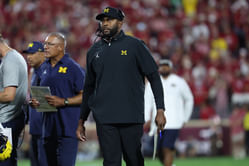
Nestled in the heart of Tucson, Arizona, the University of Arizona boasts a rich history dating back to its establishment in 1885. With a legacy of academic excellence and a vibrant campus culture, the university has made significant contributions to education, research, and athletics. However, one aspect that has consistently captured the spirit and enthusiasm of the university community and beyond is the beloved mascot, Wilbur the Wildcat.
Before delving into the captivating story of Wilbur the Wildcat, let's take a moment to appreciate the institution itself. Founded in the late 19th century, the University of Arizona has grown into a prominent center of learning. Its commitment to academic innovation and research has solidified its reputation as a top-tier institution. In the realm of sports, the university has been no less impressive.
Since their inaugural season in 1899, the University of Arizona football team has a storied history, marked by six conference championships, including the memorable 1993 Pac-10 title. With 21 bowl game appearances, including prestigious New Year's Six Bowls, the Wildcats have consistently showcased their prowess, earning a devoted fan base.
Wilbur the Wildcat History
In the grand tapestry of college sports, mascots hold a unique and cherished role. For the University of Arizona, this role has been impeccably embodied by Wilbur the Wildcat. The intriguing story behind the creation of this iconic mascot traces its origins to 1915 when the university unveiled its initial mascot, a living desert bobcat known as "Tom Easter." Eventually, it was rechristened "Rufus Arizona" as a tribute to Rufus B. von KleinSmid, who served as the University of Arizona president.
For half a century, the university continued the tradition of using live mascots. However, as the 1960s rolled in, this practice gradually faded away. Nevertheless, in 1959, a new era began with the introduction of Wilbur, the costumed version of the live bobcat mascots. Wilbur quickly gained popularity and became a beloved figure among Wildcats fans.
The Evolution of Wilbur the Wildcat
Originally, Wilbur embraced Arizona's Old West legacy with a blue cowboy hat, vest, cardinal bandana, and holsters, a tribute to the state's cowboy culture. In recent years, they've switched to team jerseys, respecting both team spirit and modern concerns, while Wilbur's iconic cowboy hat remains. Known as Wilbur the Wildcat and Wilma the Wildcat, they're often affectionately abbreviated as Wilbur T. Wildcat and Wilma T. Wildcat. These beloved mascots, cherished by fans across generations, have become an integral part of the university community, embodying the spirit of the Wildcats.
The Birth of the Wildcat Name
The adoption of the Wildcat name by the University of Arizona dates back to a historic moment on November 7, 1914. A Los Angeles Times columnist, captivated by the fierce determination displayed by the university's football team, dubbed them the "Wildcats." This moniker has since become an enduring symbol of the university's competitive spirit and tenacity.
Wilbur the Wildcat's Origin Story
The tale behind the birth of Wilbur the Wildcat underscores the ingenuity and enthusiasm of the university's students. In 1959, Richard Heller and John Paquette, roommates at the time, undertook a mission to breathe life into Wilbur. Armed with only $100 from the Associated Students of the University of Arizona, they skillfully fashioned the Wilbur costume, laying the groundwork for the establishment of the Wilburs booster club.
FAQs on Wilbur The Wildcat
A. The University's first live mascot, a desert bobcat, was introduced in 1915 and initially named "Tom Easter," later renamed "Rufus Arizona."
A. Originally, Wilbur wore a cowboy hat, vest, bandana, and holsters; today, he sports the team's athletics jerseys while retaining the iconic cowboy hat.
A. The team earned the "Wildcats" name in 1914 when a Los Angeles Times columnist praised their fierce determination during a game.
A. Wilbur was created in 1959 by roommates Richard Heller and John Paquette, and he made his debut during a University of Arizona versus Texas Tech football game.









